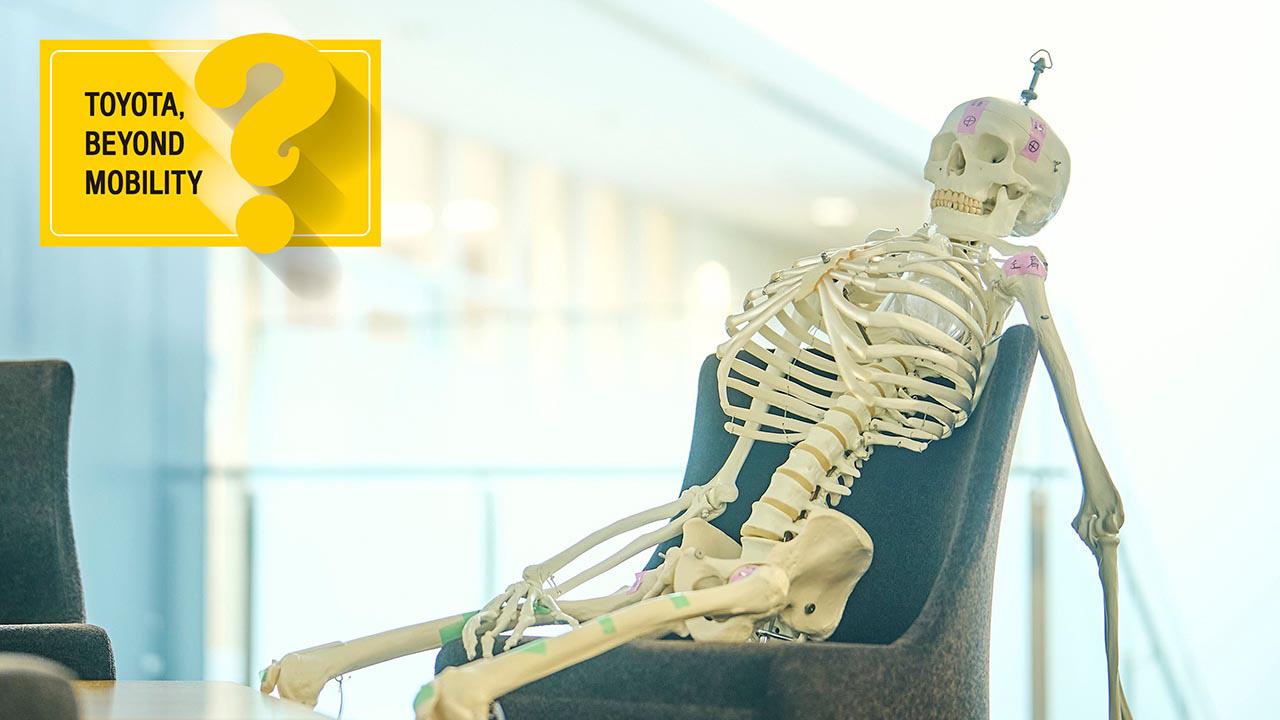
This is a series showcasing Toyota's research in non-automotive fields. This time, we discovered our dream seats.
Why build wobbly seats?
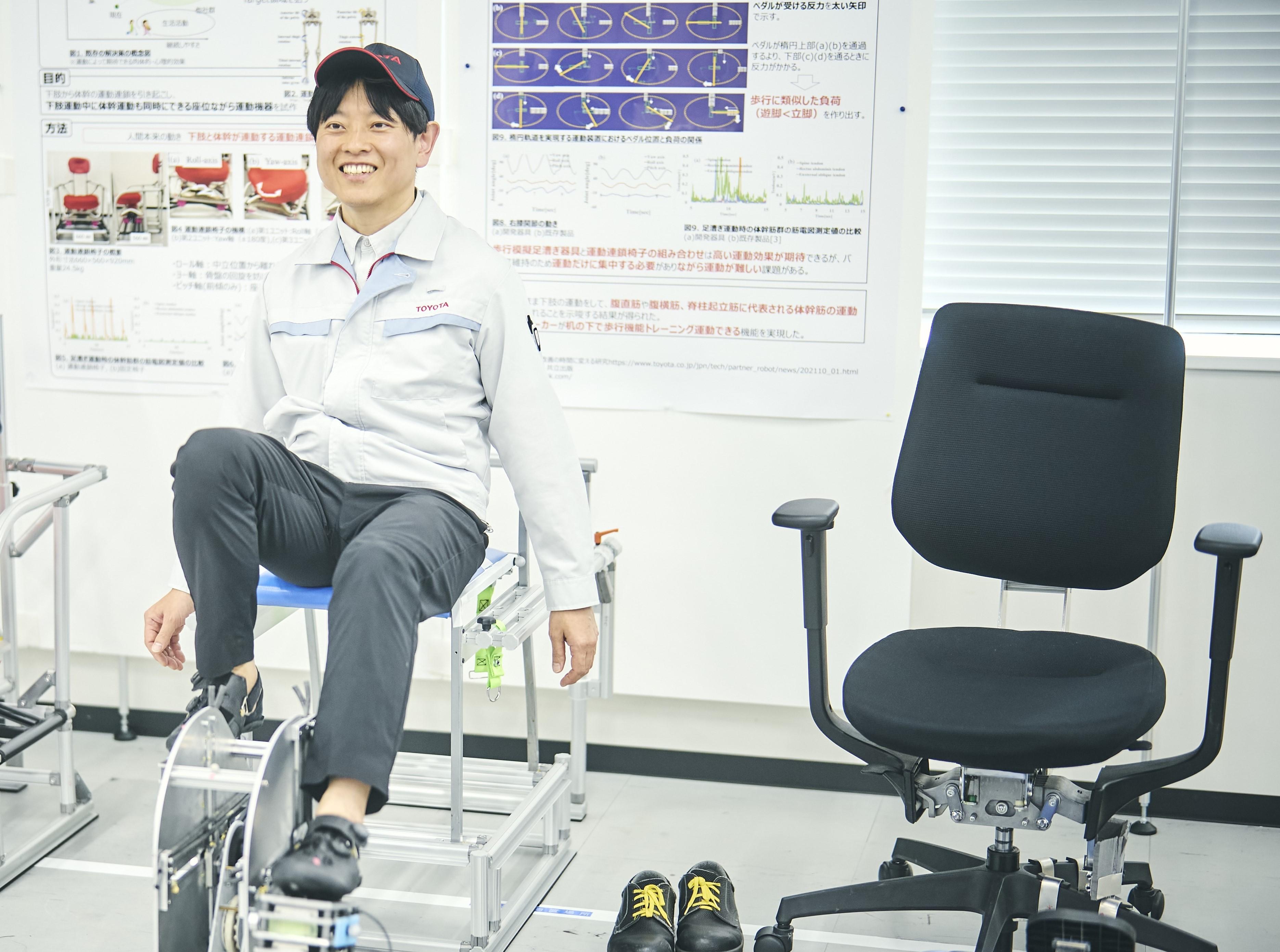
Among the creations in the workshop were some that featured foot pedals, as in the photo above. Having tried all kinds of approaches, the team has often opted for wobbly, unstable seats.
Eisuke Aoki, Project Manager, Human Research Group, Frontier Research Center
The human body possesses systems known as kinetic chains. We found that if you move your legs on a seat that rotates and rocks your trunk from side to side, the movement is also transmitted to the pelvis, lumbar vertebrae, and thoracic vertebrae.
Muscle activity measurements showed that muscles around the abdomen were moving along with the lower limbs[1].
Many of our readers have likely seen a rise in sedentary time while working from home. According to a paper by Kyoto Prefectural University of Medicine, research data suggests that mortality risk increases by 15% for every two additional hours spent seated daily[2].
We should avoid sitting for long periods and actively move our legs to improve blood flow, but our busy realities make this difficult. Good health means nothing if it is not maintained, which is why chairs that enable workers to do aerobic exercise while seated in the office hold such great potential.
“Who would have thought...”
This research began as an attempt to address concerns at Joystay, the Geriatric Health Services Facility run by Toyota Motor Health Insurance Society. The tried-and-true genchi-genbutsu approach to monozukuri yielded many insights, sparking the ideas for these unique chairs.
Elderly patients spend much of their time sitting and are at high risk of suffering falls. On top of that, during the pandemic, the rehabilitation room was closed to prevent close contact between individuals.
After speaking with facility staff about patients’ needs, the development team built a foot-pedaled rehabilitation machine.
Eisuke Aoki, Project Manager, Quantum Human Research Group, Frontier Research Center
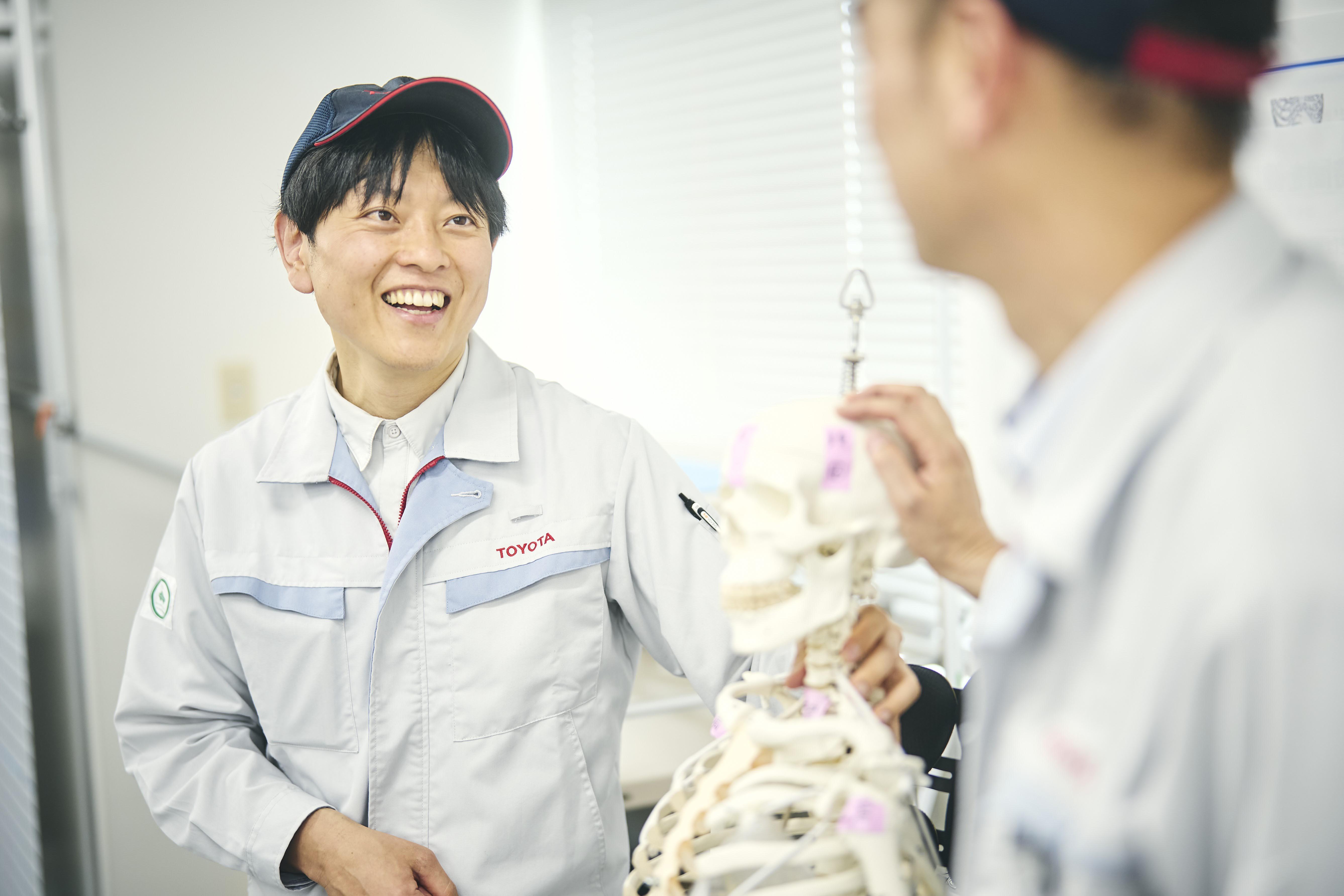
We brought what we had built to the facility and asked the staff how they would use it. They offered lots of feedback—“a dolly would be good,” or “something to stop patients falling backwards when they’re pedaling”—which we took back with us to make repeated improvements.
Some residents had knee pain or limited range of motion in their joints.
We reduced strain on the knees by shifting to an elliptical movement and adjusted the range of joint motion through trial and error. The machine can be used from a wheelchair, reducing the risk of falls and the cost of watching over users.
Facility staff shared the following comments about the device.
Yasuhiro Mori, General Manager, Joystay
Seniors lose motor function after just two weeks of inactivity, and once lost, it is very hard to recover.
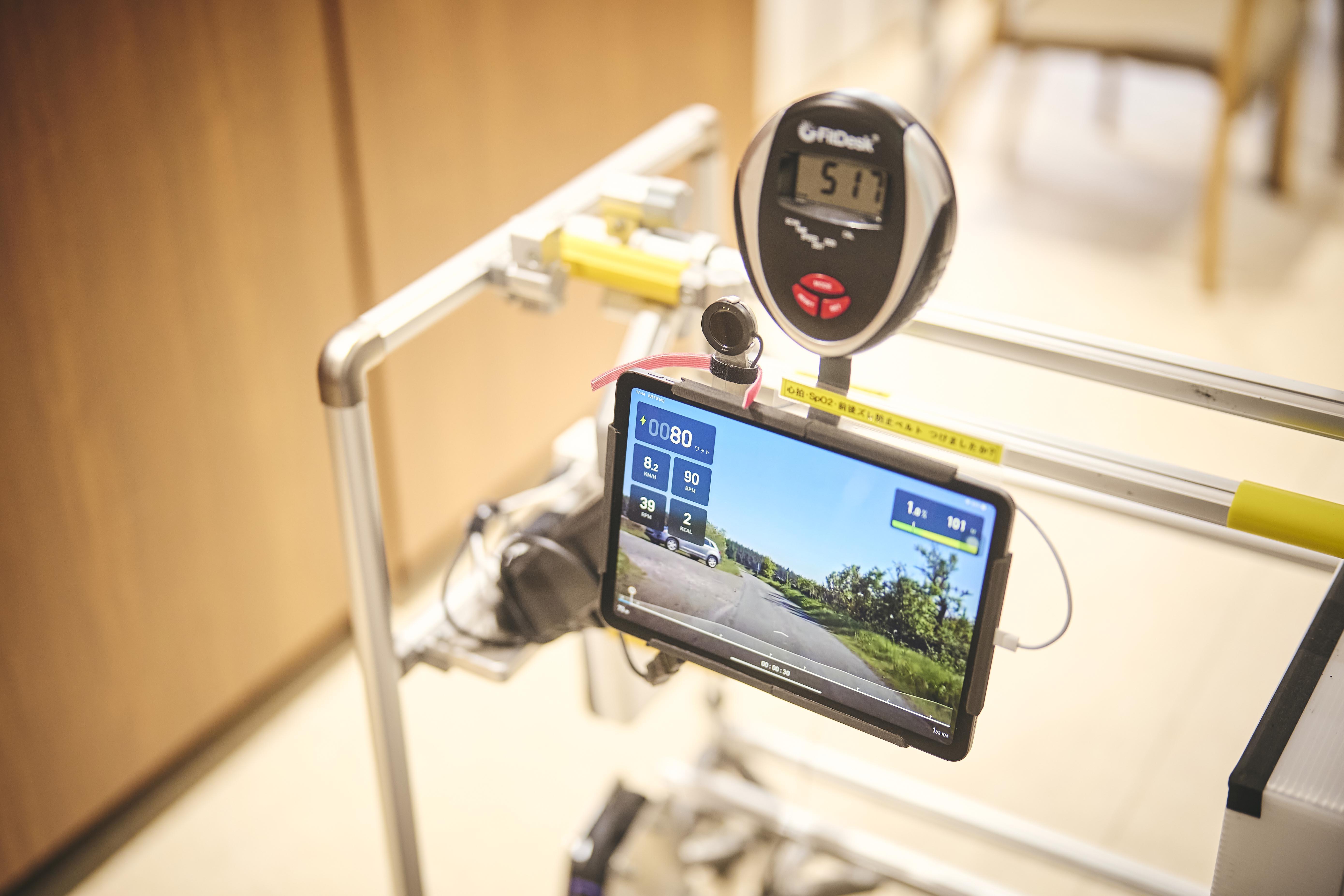
Because the scenery changes as you move your legs, there is a fun game-like element that helps patients to continue exercising.
Shohei Shibata, Physical Therapist
Users said they enjoyed it and their legs felt lighter. Even family members were stunned, telling me “Who would have thought she could move like this!” (laughs).
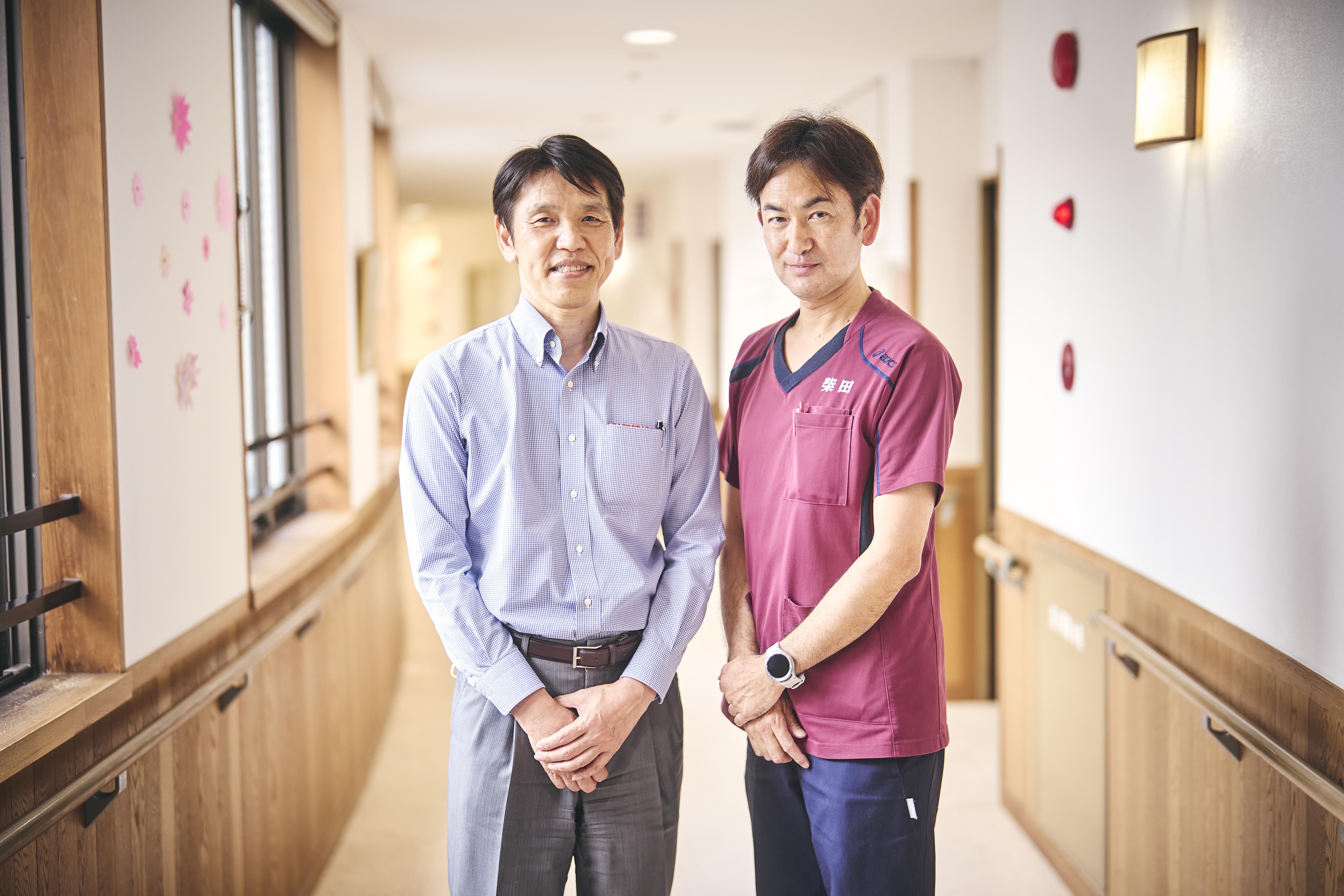
Casters make for easy portability, and the pedal setup provides great exercise even for wheelchair-bound users. The device “helped patients to stay active” during strict pandemic-era restrictions.
A Cabinet Office project estimated that a 20% reduction in people with diminished ADL (activities of daily living) and those who have difficulty leaving home could reduce nursing care and medical costs by 1.3 trillion yen and 12.8 billion yen respectively by 2034.
Developing devices that help the elderly regain their functions is a greatly meaningful endeavor that contributes to the happiness of not only the individuals and their families, but people everywhere.
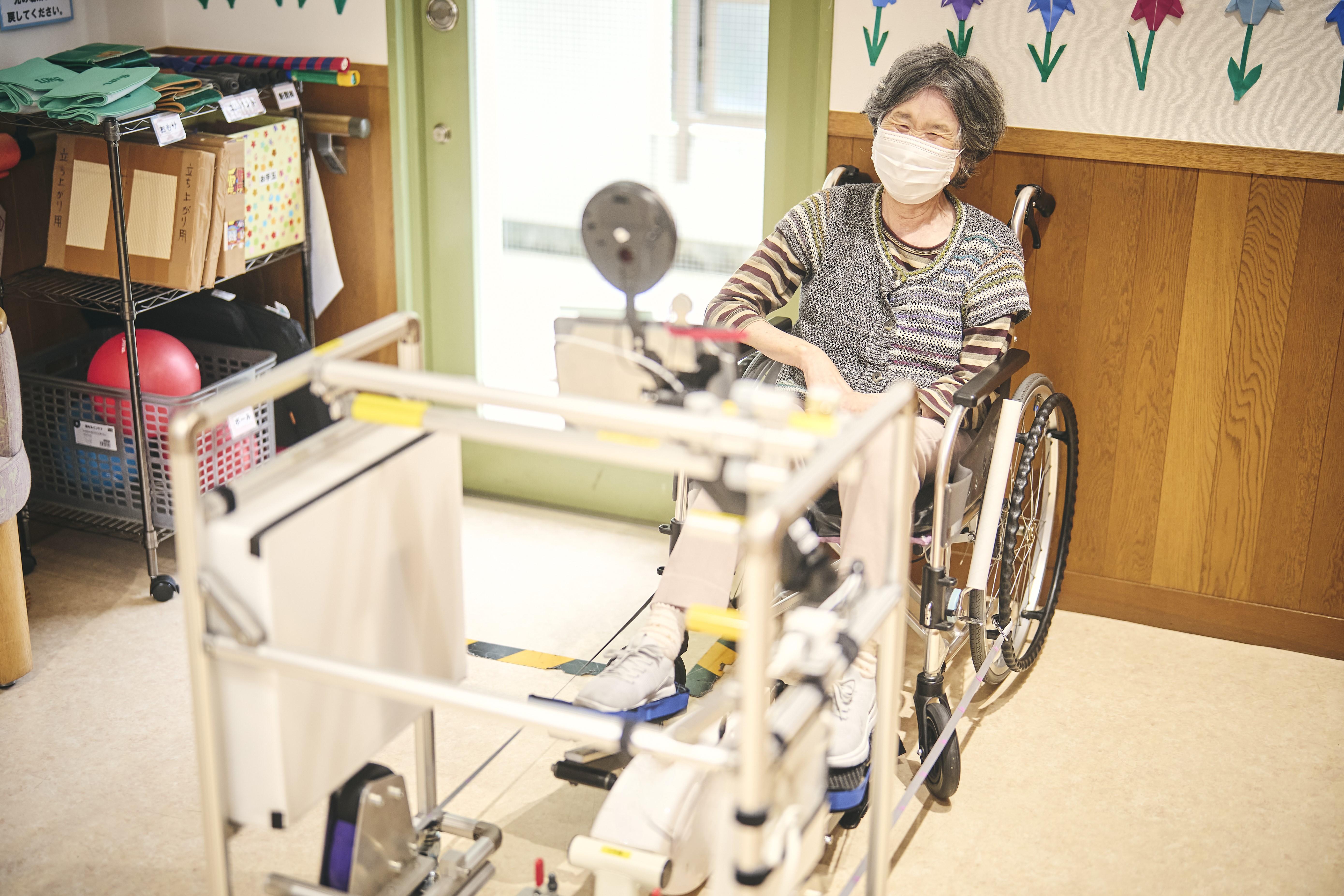
Eisuke Aoki, Project Manager, Quantum Human Research Group, Frontier Research Center
There is just so much we don’t know about how our bodies work. It’s fascinating. Take, for example, the way you use a handheld fan—the joint movements differ from person to person. We hope to make people happier not by forcing them to adapt to the objects they use, but by gaining a deep understanding of humans.
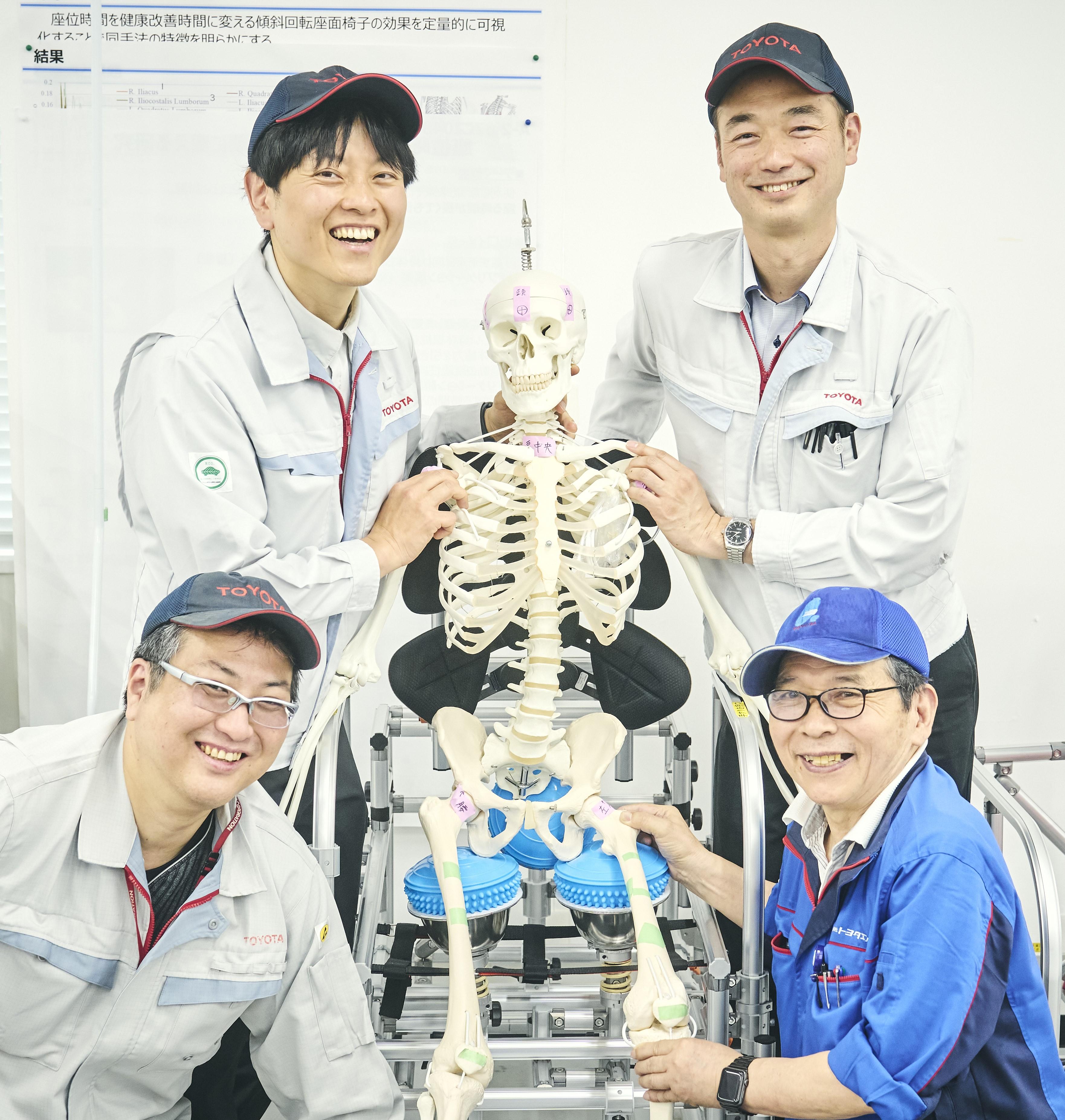
These efforts are about more than simply supporting the health of seniors and businesspeople who spend a lot of time sitting. With all the buzz around Japan’s “2024 logistics problem” sparked by a revision of truck driver working hours, they are also likely to uncover new possibilities in an area more closely related to Toyota’s main business of developing car seats.
Let’s see what the future holds!

